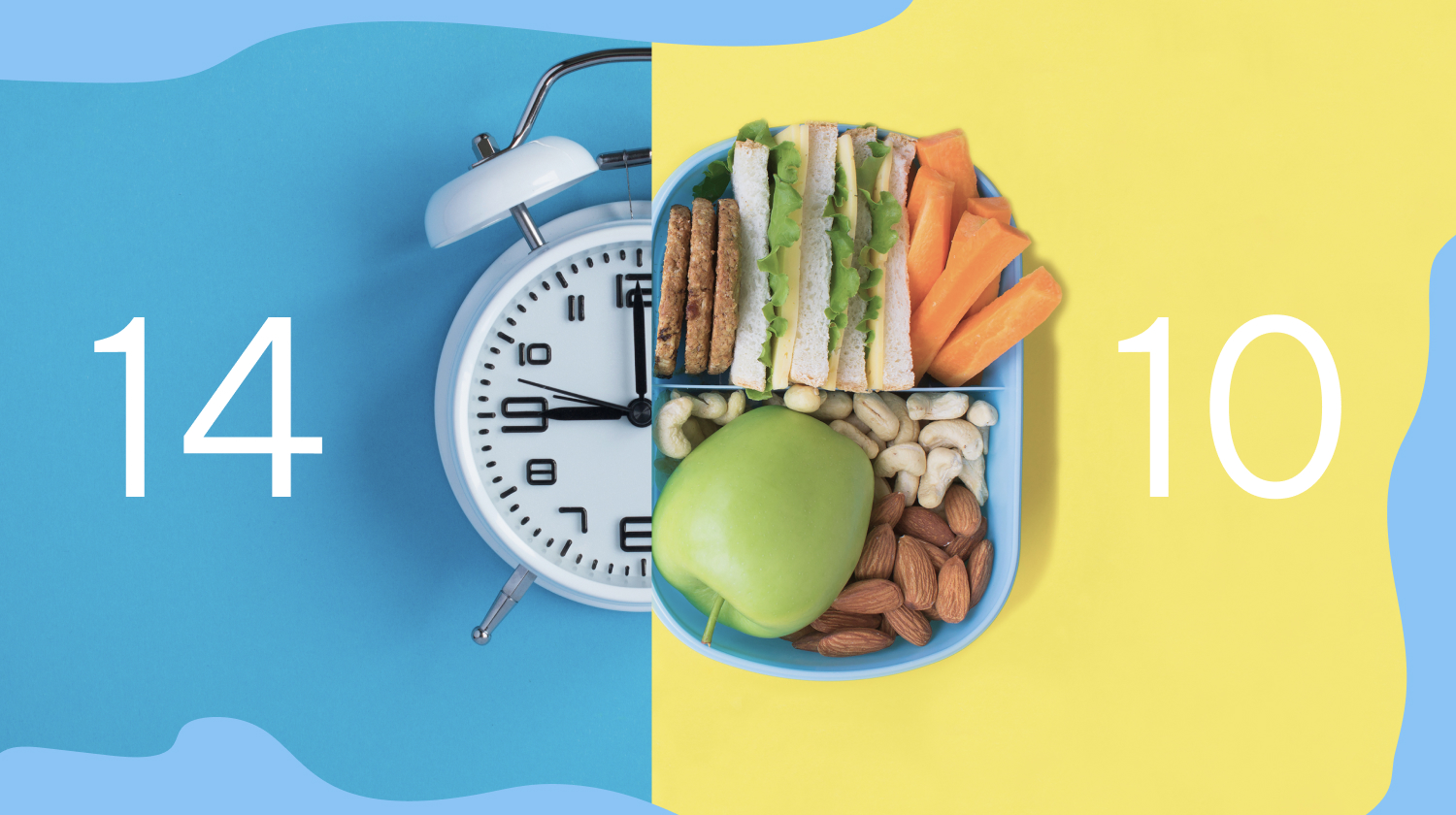 Expert's opinion
Expert's opinion
Expert's opinion
The article is a subjective view on this topic written by writers specializing in medical writing.
It may reflect on a personal journey surrounding struggles with an illness or medical condition, involve product comparisons, diet considerations, or other health-related opinions.
Although the view is entirely that of the writer, it is based on academic experiences and scientific research they have conducted; it is fact-checked by a team of degreed medical experts, and validated by sources attached to the article.
The numbers in parenthesis (1,2,3) will take you to clickable links to related scientific papers.
Intermittent Fasting 14/10: How Does It Work? Benefits & Tips

Obesity has become global pandemic. Globally, the percentage of overweight adults was just 1% in 1975 but has increased 6–8% in 2016 and leads to at least 2.8 million deaths each year. Obesity is known to prompt various preventables chronic diseases and disorders such as heart disease, cardiovascular disease, high cholesterol, high blood pressure, metabolic syndromes and certain cancers. So what is the number one contributor to obesity? The short answer would be the modern human diet with the over-abundance and consumption of unhealthy food options inundating our daily lives.
Intermittent fasting with its potential weight loss and health benefits is a relatively recent circulating theory amongst health institutions. Intermittent fasting can be defined as deliberate periods of time-restricted eating and drinking which usually leads to overall reduced calorie intake. Reduced calorie intake and calorie restriction over animal life spans has been accepted within the scientific community as a key factor in overall health and longevity.2 There are other intermittent fasting methods but this article will specifically review the how-to and the benefits of a common method known as the 14/10 fast.
What Is Intermittent Fasting 14/10?
Intermittent fasting, specifically 14-10 is 10 hours of an eating period and 14 hours of a fasting period. This means no caloric food or drink within the 14 hour fasting period. Water, black coffee or tea is allowed; think food or drink with zero calories.
As an example, your last meal would be at 6 pm and the first meal would be at 8 am. Or you could have the last meal at 8 pm and the first meal at 10 am. Having this type of eating pattern, the 14-10 intermittent fast ensures the body enters ‘fasting mode’ which can begin to burn stored body fat, lower blood sugar (glucose regulation) and repair damaged cells within the body. The 14-10 intermittent fast is a doable eating window in that the average human can easily be sleeping for the majority of the fasting period and may just need to eat later in the morning.
How Does Intermittent Fasting 14/10 Work?

Intermittent fasting is a seemingly simple concept but has many underlying mechanisms at work. In a human’s body, glucose and fatty acids are the main sources of energy for cells. Fat is stored in adipose tissue known as triglycerides. When you fast, those triglycerides break down stored fat into energy which is known as ketosis. After eating, ketone levels are low therefore less ‘work’ is being done within the body. This process is called metabolic switching which refers to the transition of the body’s energy source from glucose to stored fats.
This metabolic switch can have various health benefits, including increased fat burning, improved insulin sensitivity and other benefits which will later be discussed. Intermittent fasting also allows for the process of autophagy to take place which is a cell self-cleaning mechanism that eliminates unnecessary or defective components and toxic substances to promote cellular regrowth.2 During the eating period it is important to maintain a nutritious and well balanced diet and avoid junk food to further add to health and weight loss.
14/10 vs 16/8 Intermittent Fasting: Is 14/10 Fasting Better Than 16/8 Fasting?
The major difference between a 14/10 eating pattern and 16/8 intermittent fasting is that the fasting period is 16 hours and an eating window is 8 hours. Therefore 14-10 intermittent fasting has a longer eating window and a shorter fasting window. Although evidence remains inconclusive, it is hypothesized that longer fasts do have slightly more health benefits. This is due to the longer fasting window which empowers the body to enter further into the ketosis leading to increased potential fat burning, autophagy and metabolic benefits. However, the choice in length of your eating window ultimately depends on individual preferences and goals. Nonetheless 14/10 intermittent fasting has also shown to promote weight loss and demonstrate some metabolic changes.
3 Benefits Of Intermittent Fasting 14/10

Health and Weight Loss
Intermittent fasting has been seen to improve metabolic health which in turns alters glucose sensitivity and blood sugar regulation all of which decrease the risk for metabolic syndrome, diabetes, cardiovascular disease, inflammation, neurodegenerative disease, and possibly even certain types of cancer. Additionally, fasting has weight loss benefits because it reduces overall calorie intake which promotes a calorie deficit, leading to weight loss. As mentioned during fasting period ketones are activated to utilize stored body fat as an energy source which facilitates fat burning. It also influences appetite hormones, reducing hunger sensations and promoting decreased calorie intake.2 However to achieve desired results one must be mindful of incorporating a balanced diet and regular exercise regimens like intermittent fasting muscle gain.
Cognition
Intermittent fasting may have positive effects on short term and long term brain function. Reviewed several studies which demonstrated cognitive gains in multiple domains such as memory, executive functioning and overall cognition after older adults adopted intermittent fasting for 12 months. Results like these can be explained because intermittent fasting enhances a protein that supports the growth and maintenance of neurons which are the essential elements of a healthy and effective brain. Additionally, intermittent fasting decreases oxidative stress in the brain which plays a role in neurodegenerative diseases such as Alzheimer’s and Parkinson’s disease.1 However there is still much more human research to be done.
Sleep
Intermittent fasting may have positive effects on sleep quality through various mechanisms. By promoting stable blood sugar levels and reducing late-night snacking, intermittent fasting helps regulate circadian rhythms (the sleep-wake cycle) and in return improve sleep quality. One study that analyzed the effects of intermittent fasting on several overweight young adults showed that nightly fasting greater than 14 hours resulted in less energy intake and lower weight. In addition, participants reported improvements in sleep satisfaction, satiety at bedtime, and energy levels.
Tips For 14:10 Intermittent Fasting
If you are just getting started with intermittent fasting, there are always tools like intermittent fasting apps to get you on track. Otherwise here are some basic tips and tricks to make it more sustainable.
- Start slow: You can always start at shorter fasting periods, such as 12 or 14 hours increase over time as your body adjusts. You can keep the shorter fasting periods or choose to go with longer periods based on your lifestyle and preferences. You can be flexible based on social events, travel, or other commitments to ensure it fits into your lifestyle comfortably.
- Drink plenty of water throughout the day, especially during fasting periods. Water helps avoid hunger pangs and keeps you hydrated.
- Eat nutrient-dense foods during your eating window and plan your meals ahead of time to avoid impulsive unhealthy food choices.
- Stay busy and distracted throughout engaging activities which will keep your mind occupied to distract you during fasting periods. Engage in activities that keeps your mind off of food during fasting periods.
When Will I See Results From 14/10 Intermittent Fasting?

If appropriately adhered to, intermittent fasting can usually lead to noticeable physical and physiological changes such as weight loss within 8-12 weeks. Literature review identified that 7 of 9 studies reported significant weight loss over a 12 week period, 3 of 6 studies found significant decreases in fasting insulin and 3 of 8 studies found significant improvements in circulating LDL cholesterol or triglycerides.
However, it is important to acknowledge that intermittent fasting does not yield significant weight loss results as seen through various studies. On the other hand paired with exercise and maintaining a nutritious diet is shown to be the most effective method to lose weight. Avoid processed foods, trans fats, saturated fats, refined carbs, As traditional diets go, healthy eating would consist of monounsaturated and polyunsaturated fats (healthy fat), probiotic rich foods, vital nutrient whole- foods, fatty fish, low fat meat, green tea and leafy vegetables.
Is Intermittent Fasting Safe For Everyone?
Intermittent fasting may not be suitable for everyone with certain risk factors. Individuals with eating disorders, pregnant or breastfeeding women, people with certain metabolic conditions like diabetes, children and adolescents or people with nutrient deficiencies may experience mild to severe adverse effects from intermittent fasting. It is important to consult with a healthcare professional before starting intermittent fasting.
Conclusion
In conclusion, the 14/10 intermittent fasting method can be utilized as an essential first step for health and weight loss. With a shorter fasting window and longer eating window, it can be more sustainable and easier to adopt into your lifestyle. Intermittent fasting, if done right, can improve overall health and longevity through its intricate processes within the human metabolic system. Ultimately, the choice of intermittent fasting method should be based on individual preferences and goals. 14/10 approach offers a flexible and practical option for those looking to reap the benefits of intermittent fasting.



